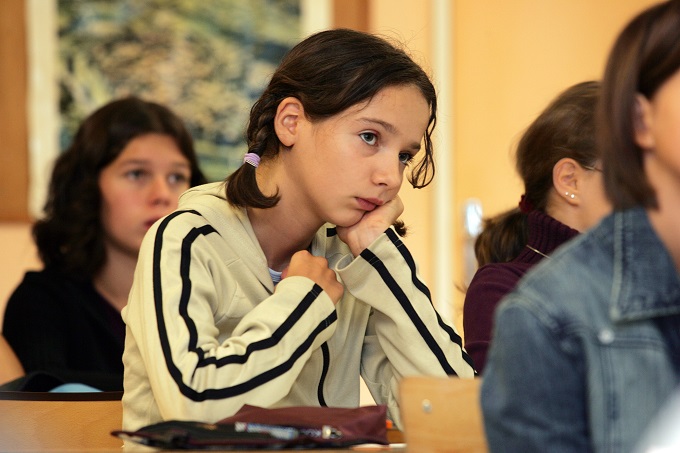Handling suicidal ideation in school

First, always record and report your concerns up the totem pole.
“If a teacher has concerns about the safety of a student, the student needs to be assessed and closely monitored by the appropriate person in the school until support from a mental health professional/agency and/or whanau is available,” Education psychologist Michele Blick qualifies.
“If there is the threat of a person causing danger to him/herself or others, this information cannot remain confidential. The management team or person in charge of pastoral care at the school will work closely with parents/caregivers/whanau.”
Language can be tricky, and phrases like ‘I’d rather die’ and ‘I’ll kill myself if I have to do that’ are relatively common among teenagers. But if phrases like this are being used by a student who has been identified as ‘at-risk’, is listed on your school care-register and/or present with other warning signs, teachers should express their concern.
This article was written for our print magazine, School News Term 1, 2019. Did you receive your copy?
Specialist bereavement counsellor Dr Dianne McKissock provides some context: “The majority of people say things like ‘I wish I was dead’ or ‘if it wasn’t for X, I’d kill myself’. It is rare for people to act on those words. If anyone sounds or appears suicidal it’s important to listen empathically, then clarify intent. Ask questions like, ‘Are you telling me you feel so bad at the moment that you wish you didn’t have to wake up in the morning, or are you telling me that you really intend to kill yourself?’
“If they answer yes to the first part of the question, ask something like, ‘What do you really need me to understand?’ If yes to the second part, ask if they have a plan to kill themselves, and how and when they might act on that plan.
“If the plan sounds serious and achievable, let the student know that by law you have to act on what they have told you, that you have a responsibility to ensure their safety. Ask, ‘Who would you prefer me to tell? Your parent’s, a bereavement counsellor, your GP, or all of the above?’ Never carry responsibility for another person’s life alone. Teamwork is essential.”
Classroom warning signs for suicide and self-harm
Research, such as the systematic review carried out by Judit Balazs and Agnes Kereszteny in World J Psychiatry, infer a positive association between ADHD and suicidality in both sexes and in all age groups. However, a direct link between ADHD and suicide is hard to ascertain because of comorbid disorders like depression and anxiety. A US study of 1706 children between the ages of six and 18 found that all children with suicide attempts had a comorbid psychiatric disorder, meaning more than one, as did all but two children with suicide ideation.
Aside from risk factors like diagnosed mental health issues and complex family issues that the school may be aware of, there are more subtle things that teachers can look out for to pinpoint vulnerable students.
“These include behavioural change in the following areas: academic performance or attendance, mood, withdrawal from social events and relationships, physical symptoms such as headaches or fatigue, risk-taking and self- destructive acts, oral or written communication suggesting hopelessness or a preoccupation with death,” Ms Blick listed.
What to do when a student expresses suicidal thoughts?
Students are often encouraged to speak to a school pastor or guidance counsellor but class teachers spend far more time with students and may be their first port of call. Particularly for students who are non-religious or don’t feel comfortable visiting the office of a guidance counsellor. For other students, a favourite teacher might be the only adult they trust. So it’s important to be considerate of this if you are in a scenario where a student has confided suicidal thoughts or other concerning ideation. Students may also not be aware that teachers have a duty of care to report what they have said.
“Responding to mental distress and suicidal thoughts is done by professionals who have had extensive training in mental health,” says Ms Blick. “However, teachers need some training to know how to initially respond to a student who reaches out for help.
“If a student approaches a teacher with concerning behaviour, the teacher needs to remain calm and attentive, acknowledge and validate the student’s feelings of distress and express empathy, listen without judgement, thank the student for trusting her/him to share this information, and inform the student that s/he will need to get someone else to assist. The teacher can continue to show support for the student by checking in with the student and reminding the student of the support that is available.”
Skylight resource centre coordinator Raewyn Hewitt suggests a similar response from classroom teachers: “Young people need to know that it is safe to reach out for help. That things won’t get worse than they already are. They need to know that asking for help is a sign of strength and shows that they really want things to get better for themselves.
“The only way they will truly know this is if safe adults are able to receive the information and handle it in a way that will make things better. This means listening. Allowing them to finish what they want to say. Praising them for sharing and asking for help. Coming up with a (safety) plan – preferably with the child’s consent and buy-in.”
Finally, if you’re reading this unsure of who you would escalate concerns to amongst your colleagues, or several students of concern have popped into your head while reading, speak with your school management about putting systemic protocols in place today.
“Schools need to ensure there are school-wide programmes in place that promote student wellbeing,” reiterates Ms Blick. “This includes supporting cultural engagement and connectedness.
“With suicide rates for Maori youth higher than for non-Maori, schools need to be actively supporting the identity, culture and language of Maori youth.”
Helpline contact numbers (recommended by the Ministry of Health):
- Need to talk? (1737 – free call or text)
- The Depression Helpline (0800 111 757)
- Healthline (0800 611 116)
- Lifeline (0800 543 354)
- Samaritans (0800 726 666)
- Youthline (0800 376 633)
- Alcohol Drug Helpline (0800 787 797)









